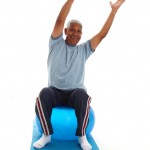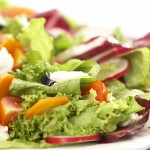 Go ahead and try…to get out of it! Yes, there will be days exercise simply won’t fit into your schedule easily; unexpected errands, family emergencies, work projects out of our control. Ultimately, the decision has to be yours and yours alone. My challenge to you is to work to overcome your excuse. Which is your favorite? Bet it’s on the list. Take a look!
Go ahead and try…to get out of it! Yes, there will be days exercise simply won’t fit into your schedule easily; unexpected errands, family emergencies, work projects out of our control. Ultimately, the decision has to be yours and yours alone. My challenge to you is to work to overcome your excuse. Which is your favorite? Bet it’s on the list. Take a look!
I don’t know what to do. Research your options. Talk to your friends and ask what they do for exercise. Ask them if there’s a particular exercises, class or club they enjoy participating in.
Exercise hurts. The bottom line is exercise should not hurt. If your workout hurts, change it.
I don’t want to exercise with others. If you spend all day interacting with others, it makes sense you’d look to your workout for time alone to recharge. Taking a walk is a great option. Or there’s always the option to wear your headphones, with the music off!
I don’t want to exercise alone. If your workout is a social outlet for you, check out one of the many classes, clubs and activities offered around town. There are many recreation sports clubs and city-league teams in which you may participate. There are also many non-profit events year-round which is a great way to meet others with similar interests.
I’m just not motivated. One of the best ways to overcome lack of motivation is to set goals. Set short term goals, as well as long term goals. Break them down and chart your progress.
I can’t afford a gym. Purchase a DVD or Exercise Video. Check out classes offered for nominal fees or no fee such as the adult education program, non-profit classes and city recreation programs.
I’m too tired. Exercise will give you energy. Exercising forces us to breathe deeply. Doing so, decreases stress, muscle tension and helps clear our minds. When you’re feeling tired and sluggish one of the best things you can do is move!
I don’t like to exercise! If you don’t like (at least a little bit) the activity you’re doing, find a new activity! There really is a mode of exercise for everyone. Keep trying a different program until you find one that suits and interests you. And remember, any movement or activity is better than nothing.
I don’t have the time! When something is important we always find the time, don’t we? And bottom line is sometimes we just have to make the time. Scheduling your workouts in your planner will help you carve the time out of your day. Telling friends your plan and goals and asking them to hold you accountable is also helpful.
As you can see, virtually every excuse can be overcome. There is always an answer; if you are stumped it just means you haven’t thought of the solution yet, it doesn’t mean there is no solution. Keep at it until you find the magic combination for your individual fitness goals.
 Subscribe
Subscribe







